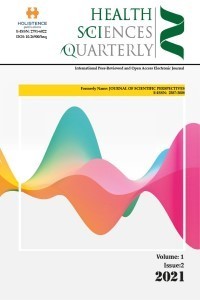FEASIBILITY OF NEARLY-ZERO ENERGY BUILDING RETROFITS BY USING RENEWABLE ENERGY SOURCES IN AN EDUCATIONAL BUILDING
Nearly-zero energy buildings, Educational buildings, Renewable energy
FEASIBILITY OF NEARLY-ZERO ENERGY BUILDING RETROFITS BY USING RENEWABLE ENERGY SOURCES IN AN EDUCATIONAL BUILDING
___
- ASCIONE, F., BIANCO, N., DE MASI, R.F., DE’ROSSI, F., VANOLI, GP., 2015, Energy retrofit of an educational building in the ancient center of Benevento. Feasibility study of energy savings and respect of the historical value, Energy and Buildings, 95, 172-183.
- ASHRAE, AG., 2002, ASHRAE Guideline 14: Measurement of Energy and Demand Savings, American Society of Heating, Refrigerating and Air-Conditioning Engineers.
- BASARIR, B., SAHIN DIRI, B., DIRI, C., 2012, Energy efficient retrofit methods at the building envelopes of the school buildings, www.academia.edu/Ellipsis/Energy_efficient_retrofit_methods_at_the_building_envelopes (Access Date: 30.07.2019).
- DESIGNBUILDER, v6.1.0.006, http://www.designbuilder.co.uk/ (Access Date: 10.05.2019)
- EN 832, 1999, Thermal performance of buildings, calculation of energy use for heating, residential buildings.
- ESHRAGHI, J., NARJABADFAM, N., MIRKHANI, N., KHOROSHAHI, S., ASJAEE, M., 2014, A comprehensive feasibility study of applying solar energy to design zero energy building for a typical home in Tehran, Energy and Buildings, 72, 329-339.
- KARAOMERLIOGLU, A., 1998, The Village Institutes Experience in Turkey, British Journal of Middle Eastern Studies, 25(1), 59-70.
- KORUR, A. F., 2002, Democratic education, the village institutes system in Turkey and its art education component, Ph.D. Thesis, Ohio State University, Colombus, OH.
- SAIT, HH., 2013, Auditing and analysis of energy consumption of an educational building in hot and humid area, Energy Conversion and Management, 66,143-152.
- TONGUC VAKFI, 2019, http://www.tongucvakfi.org.tr/village-institutes.html
- TURKISH STATE METEOROLOGICAL SERVICE, https://www.mgm.gov.tr/veridegerlendirme/il-ve-ilceler-istatistik.aspx (Date Access: 10.05.2019)
- TURHAN, C., COŞKUN, T., DURMUŞ ARSAN, Z., GÖKÇEN AKKURT, G., 2016, Energy Efficient Retrofits in Residential Buildings in Turkey: A Case Study for a Flat in Izmir, 8th International Ege Energy Syposium, May 11-13, 2016, Afyonkarahisar.
- VEXLIARD, A. and AYTAÇ, K., 1964, The Village Institutes in Turkey, Comparative Education Review, 8 (1), 41-47.
- WORLD MAP OF KOPPEN-GEIGER CLIMATE CLASSIFICATION, 2006.
- ZEILER, W., BOXEM, G., 2013, Net-zero energy building schools, Renewable Energy, 49, 282-286.
- Başlangıç: 2017
- Yayıncı: Holistence Publications
ON SOME BULLEN-TYPE INEQUALITIES VIA CONFORMABLE FRACTIONAL INTEGRALS
THE EFFECT OF NUMBER OF WALLS WITH DIFFERENT THICKNESS ON THE PROPERTIES OF THE POLYCARBONATE PANELS
VOLTAMMETRIC AND CHROMATOGRAPHIC DETERMINATION OF NAPROXEN IN DRUG FORMULATION
Suzan Yanik YANIK, Selehattin YILMAZ, Gülsen SAGLIKOGLU, Murat SADIKOGLU, Özlem TONGUC YAYINTAS
SEED STRUCTURE AND EMBRYO DEVELOPMENT OF SESELI RESINOSUM (APIACEAE)
Cihan TURHAN, Filiz BAL KOÇYİĞİT, Merter Acar ZİNKÇİ, Miromid SAYESTHNOM
BIOCHEMICAL EVALUATIONS OF QUINALPHOS EXPOSED ZEBRAFISH LIVER ORGANOTYPIC TISSUE CULTURE
